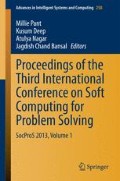Abstract
The electroencephalogram (EEG) based Brain-Computer Interfaces (BCIs) has been considerably extended to the multidisciplinary and challenging nature of BCI study. The algorithms of Digital signal processing and pattern recognition certainly constitute necessary components of a BCI system which are applied to the EEG signals to decode mental states those are relevant for BCI operation. The basic BCI concepts such as: brain activity monitoring, BCI operation, and the relevant mental states for BCI are applied to WSN. The major types of relevant mental states for BCI, namely motor imagery (ERD/ERS), steady state visual evoked potentials (SSVEP) are also mapped to MANET’s behaviour. The multivariate nature of the EEG combined with the neuroscience familiarity on hemispheric brain specialization is favourably taken into account to derive optimal combinations of the individual signals composing the EEG. BCI provides a non-muscular channel for sending commands to the external world using the electroencephalographic activity or other electrophysiological process of the brain function. A necessary factor in the successful operation of BCI systems is the methods used to process the brain signals. The processed data has been applied on to nodes of MANET where each set of sensor nodes are used for particular application. Based on the output of BCI commands, the MANET is operated and controlled with using only activities of neurons of brain, hence this approach could be more helpful to physically differently abled people or medically injured people.
Access this chapter
Tax calculation will be finalised at checkout
Purchases are for personal use only
References
BCI. Braincomputer interface: http://en.wikipedia.org/wiki/Brain
StarLab: http://starlab.es/neuroscience
Intendix: http://www.intendix.com/
Martinez, P., Bakardjian, H., Cichocki, A.: Fully-online, multi- command brain computer interface with visual neurofeedback using SSVEP paradigm. http://www.bsp.brain.riken.jp/publications/2007/BCICIN.pdf (2007)
Santhanam, G., Ryu, S.I., Yu, B.M., Afshar, A., Shenoy, K.V.: A high-performance brain-computer interface. Nature 44(2), 195–198 (2006)
http://www.port.ac.uk/research/iir/research/currentresearch/dataanalysis/braincomputerinterface/. Spiking Neural Network Based Approach to EEG Signal Analysis
Author information
Authors and Affiliations
Corresponding author
Editor information
Editors and Affiliations
Rights and permissions
Copyright information
© 2014 Springer India
About this paper
Cite this paper
Chandrakant, N. (2014). Administrating MANETs Via Brain Computer Interface. In: Pant, M., Deep, K., Nagar, A., Bansal, J. (eds) Proceedings of the Third International Conference on Soft Computing for Problem Solving. Advances in Intelligent Systems and Computing, vol 258. Springer, New Delhi. https://doi.org/10.1007/978-81-322-1771-8_23
Download citation
DOI: https://doi.org/10.1007/978-81-322-1771-8_23
Published:
Publisher Name: Springer, New Delhi
Print ISBN: 978-81-322-1770-1
Online ISBN: 978-81-322-1771-8
eBook Packages: EngineeringEngineering (R0)

